I’ve been coming across a lot of old photos of Virginia City lately and adding them to the Western Nevada Historic Photo Collection. So far there’s 850 total pictures taken in Virginia City over there, and there’s lots more I haven’t added yet. But I don’t want the pictures to just sit there hidden; I want to bring attention to the best ones. And what better way than to take a trip up to the Comstock, and see what those historic buildings look like today. Virginia City’s been through many different phases of life. It was a rough mining camp, it was a cosmopolitan city flush with wealth, it was a decaying ruin that was mostly forgotten, and then it had a rebirth and reinvention as a tourist town. Through it all some of the buildings have remained the same, some have seen big changes, and some of the unlucky ones have disappeared completely. Let’s take a trip through Virginia City’s past.
A look north on C Street through the heart of downtown Virginia City. It looks like it’s the 1950s from the cars. This was early in the rebirth period, when the town was being rediscovered as a tourist destination. On the left is the Old Washoe Club. The Washoe Club was a private club for Virginia City’s rich. Nowadays it’s known as a haunted location, and offers ghost-hunting tours.
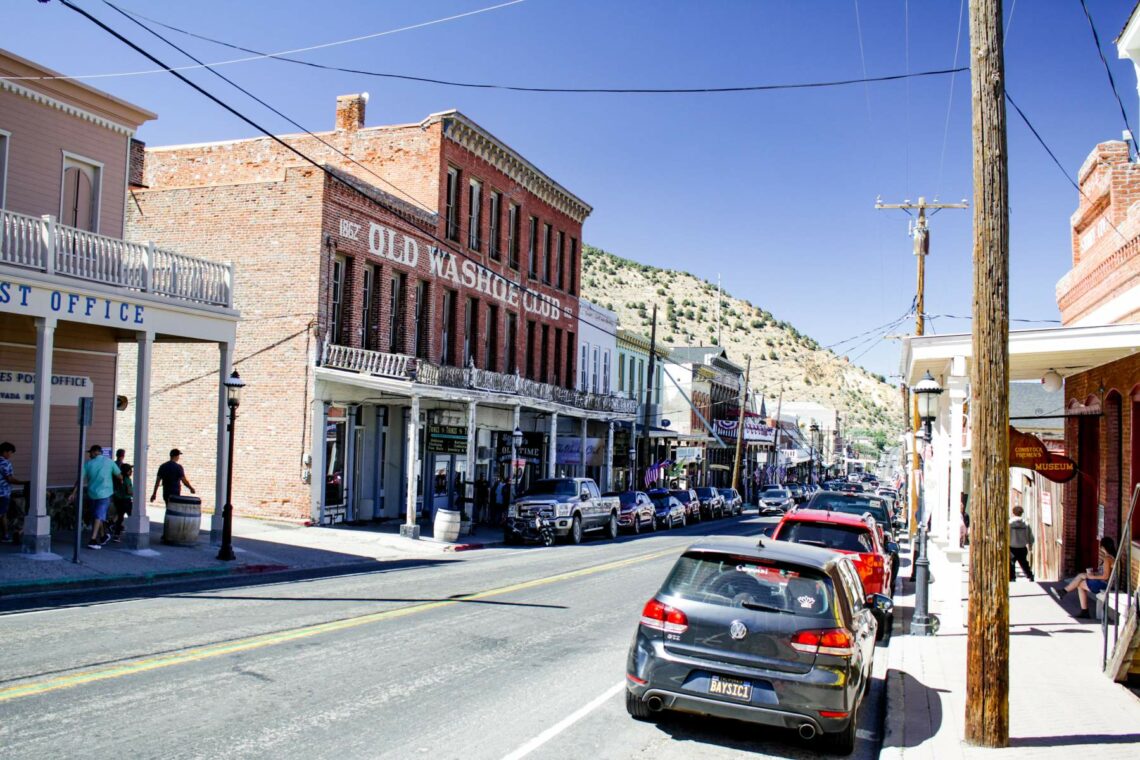
Another block north on C Street we can see the old Crystal Bar. Today this is the Virginia City Visitor Center. Next door is the Gillig Block, which originally housed John Gillig’s hardware store. Now it is the Red Garter clothing store. Many of the buildings along this stretch of C Street still have the historic signs painted on them.
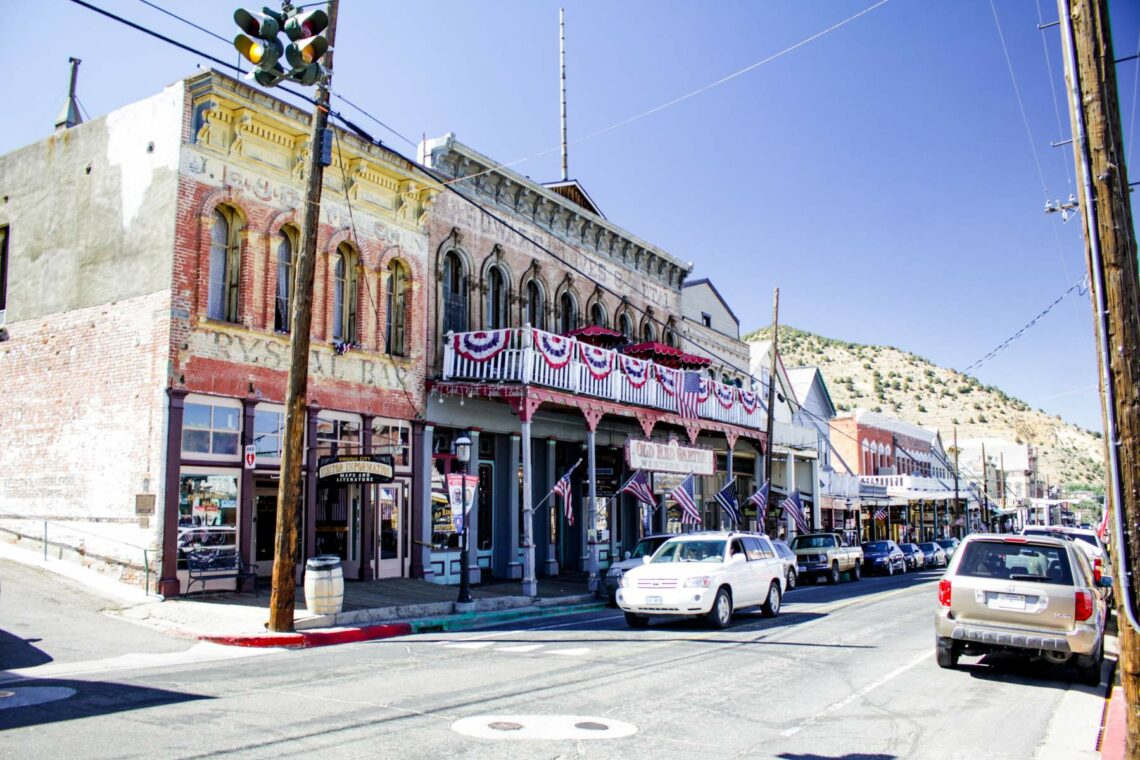
Further up the street is the Roos Bros/Palace Clothing Store. This photo is dated 1947. Roos Brothers was an offshoot of a popular clothing store in San Francisco. The Virginia City branch didn’t last after the mines dried up, but the California chain survived into the mid 20th century. This building has seen many tenants since the Comstock days. In the postcard above it was home to Ted’s Cafe and Nyman’s Market. The caption on the postcard identifies it as “Terkla’s Place”, which is a reference to John Terkla who owned the Old Comstock Saloon in the 1940s and 50s. Though I’m not sure where the Comstock Saloon was located, and I don’t see it in this photo.
The building is now home to a few gift shops and the Palace Restaurant. The old painted sign is still on the second floor.
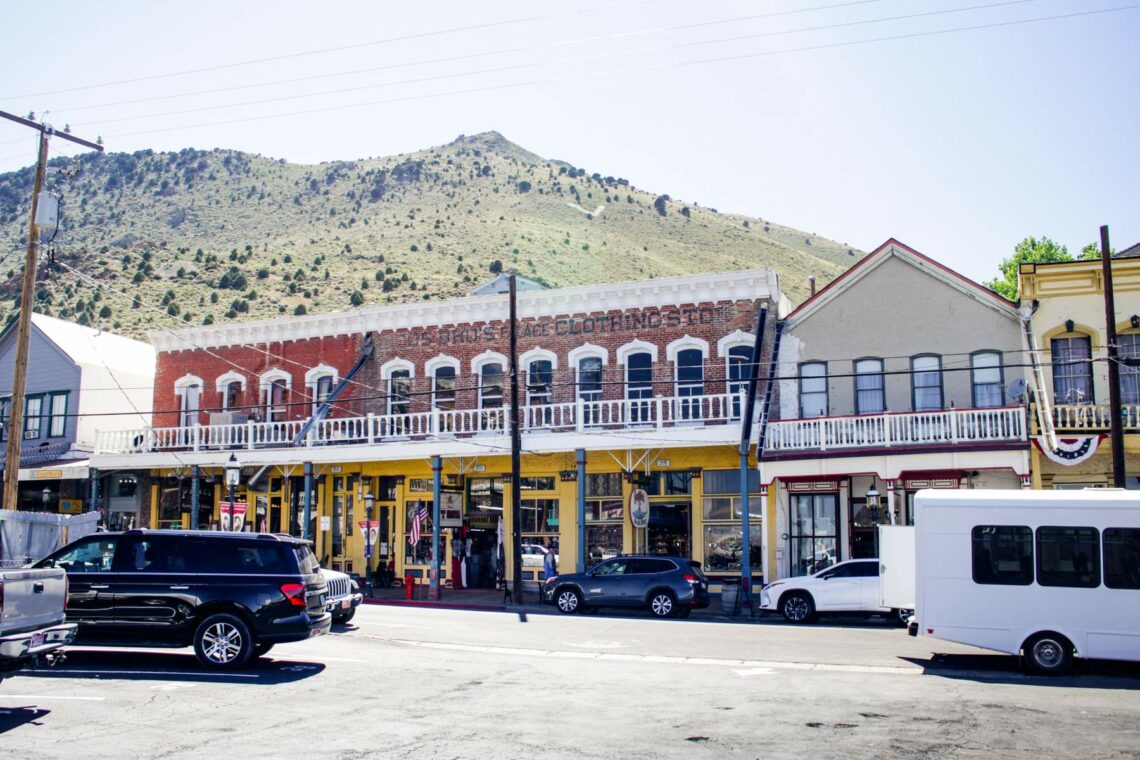
Even further up C Street, at the corner of Union Street, was the Old Sawdust Corner. The Sawdust Corner really was playing to the tourist trade, with signs advertising it as the “Oldest Bar and Gambling House”, and enticing people in with a promise to see the famous Suicide Table. The Suicide Table is a Faro card game table that, according to legend, wiped out several people’s life savings and led them to end things as a result. The Suicide Table was later moved to the Delta Saloon next door. The Delta Saloon (still known as the Smokery Club in this photo) was one of the most popular bars and casinos in town during the late 20th century, but it’s been through a rough patch lately. First they lost their gambling license and had to remove all the slot machines, then there was an explosion caused by a gas leak in 2019, which heavily damaged the old building. The Delta finally reopened under new ownership, but you can see in the picture below that repairs are still going on. In recent years the Sawdust Corner had been relegated to just being a restaurant inside the Delta, instead of being the main draw like it was in the older photo. Now it’s still closed for repairs.
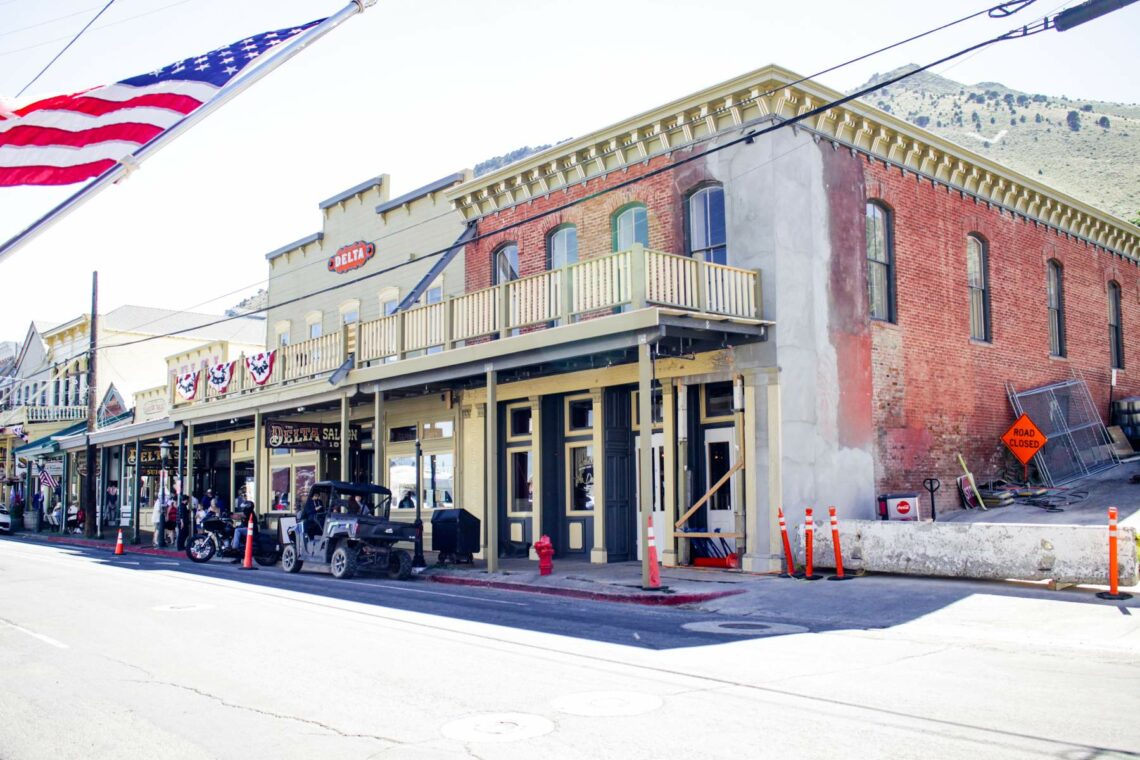
On the south side of the Delta Saloon is this group of buildings, which was looking pretty rough in 1937. They were occupied by a drug store and a couple of restaurants. The Delta Saloon back then was known as the Smokery Club. Nobody was out on the sidewalk on this day, and it’s hard to tell if the businesses are open or not. Things are a little more lively now. The buildings have been fixed up and painted. They are occupied by gift shops, and this a busy part of town now.
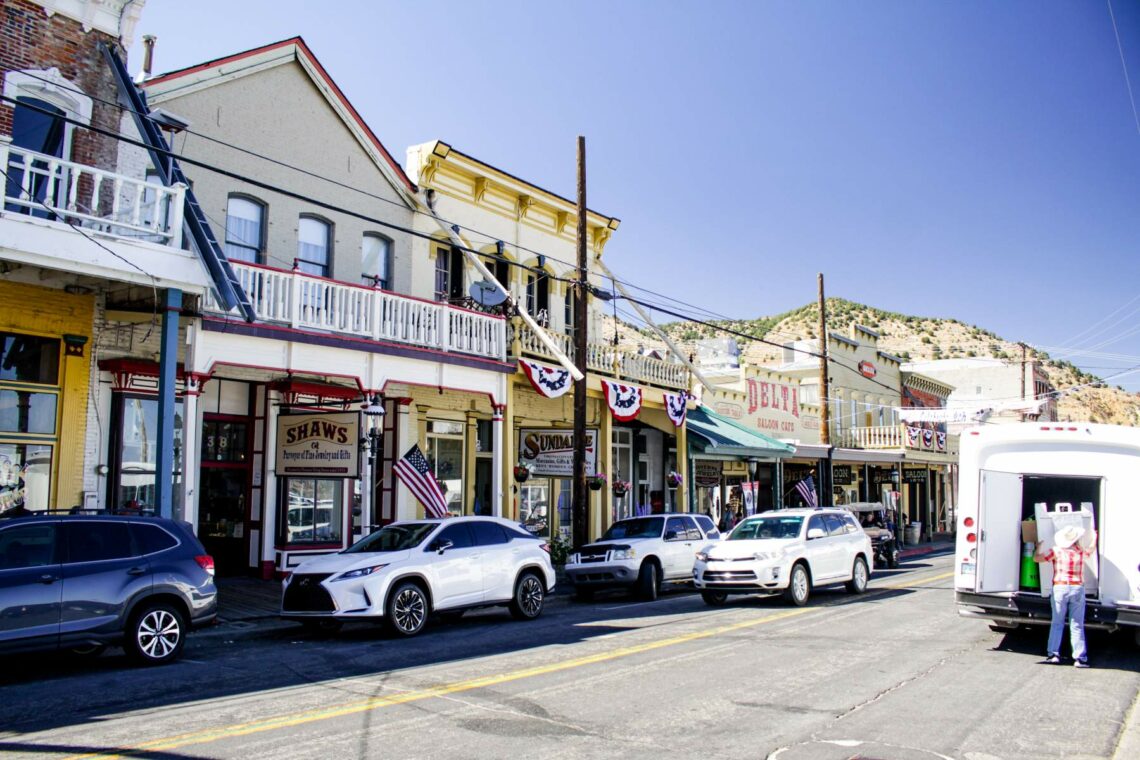
Until now we’ve seen buildings that have been pretty well preserved through the years. But not every building in Virginia City was that lucky. A lot of these buildings were neglected for many years, and quite a few of them didn’t make it. This is the Wells Fargo Bank and Express Office. Before the coming of the railroad, stagecoaches were the number one way to get in and out of Virginia City. This large building was the Wells Fargo office where all the comings and goings were coordinated. This photo is pretty early in the town’s history; it’s from the 1860s.
When Virginia City declined, Wells Fargo didn’t need this much of a presence in town anymore. The building was shuttered and not maintained. Over the first half of the 20th century the roof collapsed and the walls crumbled. By the 1950s when tourism really started to ramp up, the building was little more than a foundation in the dirt. The site where the building used to sit is now occupied by the Firehouse Saloon.

Here’s another couple of views of the Wells Fargo office. It was later joined on its block by other substantial brick buildings, such as the Hotel Virginia and the National Guard Hall. All of these are gone, replaced by smaller wooden buildings, or just still empty lots.
Another angle of the Washoe Club building, this one showing the Sazarac Saloon next door. That building was originally the office of the Bank of California. The bank was a major owner of the mines on the Comstock, and also owned the Virginia and Truckee Railroad. The bank vault is still located inside this building, even after it converted to a saloon. The name has changed from the Sazarac to the Ponderosa, but it is still an operating saloon today.

The Tahoe House Hotel was looking pretty desolate in 1937, just a few businesses on the ground floor. Now it has been renovated and still rents out rooms upstairs to tourists.

Down the street from the Tahoe House a couple of other old brick buildings were photographed in 1937. The building on the left housed the Old Bar 62 at the time. Nowadays the building is still there but it is not open to the public. The building on the right became the Wonder Lode Bar in the 1940s. In June of 1950 a fire broke out that consumed the Wonder Lode and the little wooden building next door, as well as a mansion behind them.
After the burned buildings were demolished, a U.S. Post Office was built on the site.
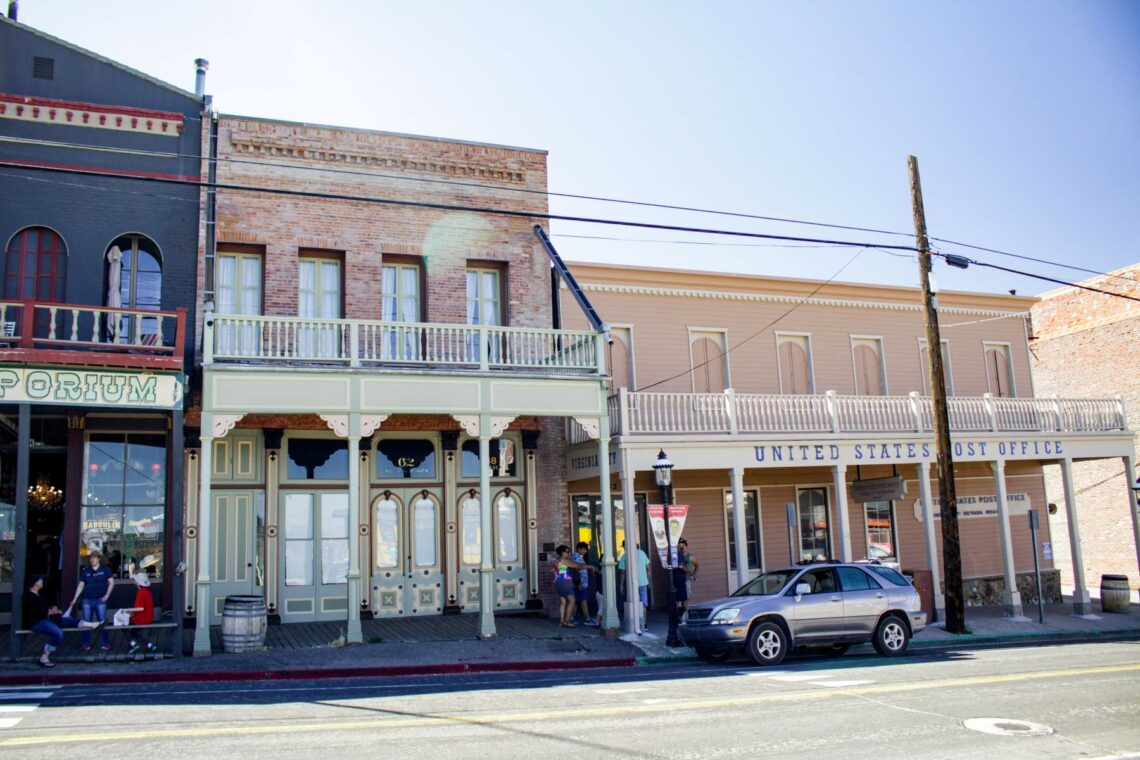
Shifting our attention to B Street, one block uphill, we see a neighborhood that was more residential. C Street was the business district, but B Street had houses mixed in with stables and opera houses. The large house on the left in this photo is the Marye Building. This was built by stockbroker George Marye in the 1870s. This was the mansion that burned in 1950 that took the Wonder Lode Bar with it. The brick building that survived is part of the Old Washoe Club.

Another view of the Marye Building. This was a pretty substantial and impressive house. If it hadn’t burned, it probably would still be one of the showpieces of Virginia City.
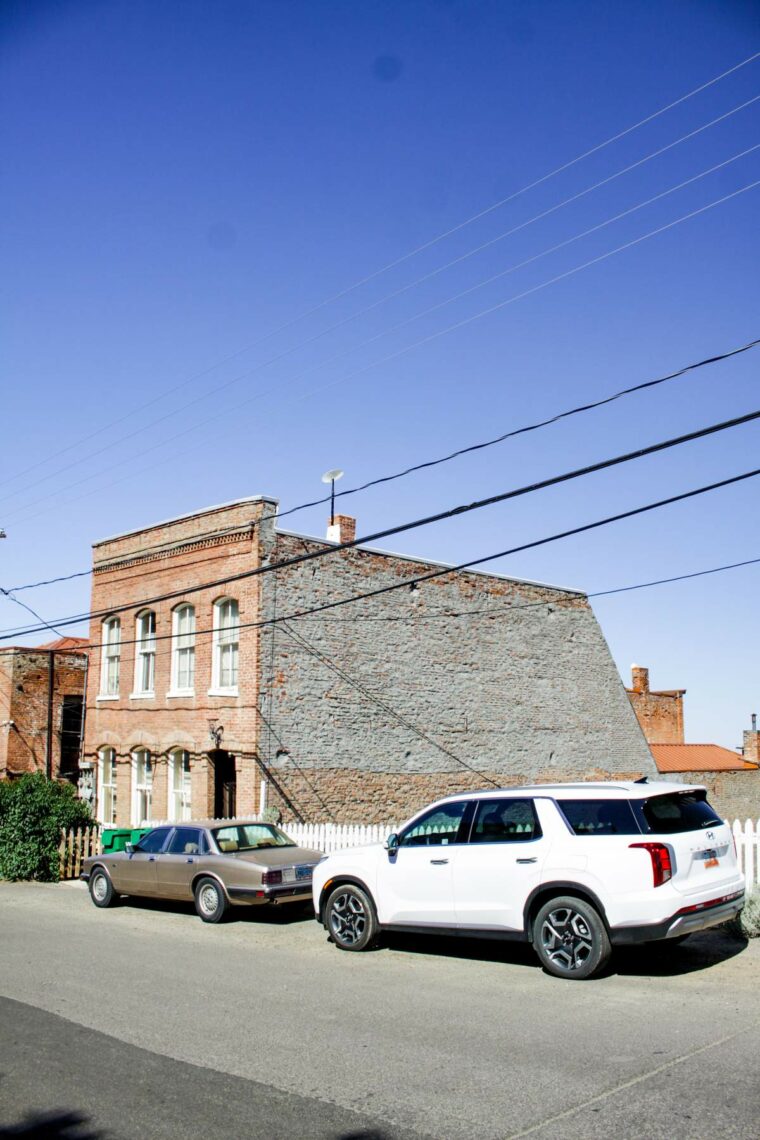
That’s it for Part 1. But there are lots of Virginia City photos out there, so we’ll be visiting more sites around town in the future.




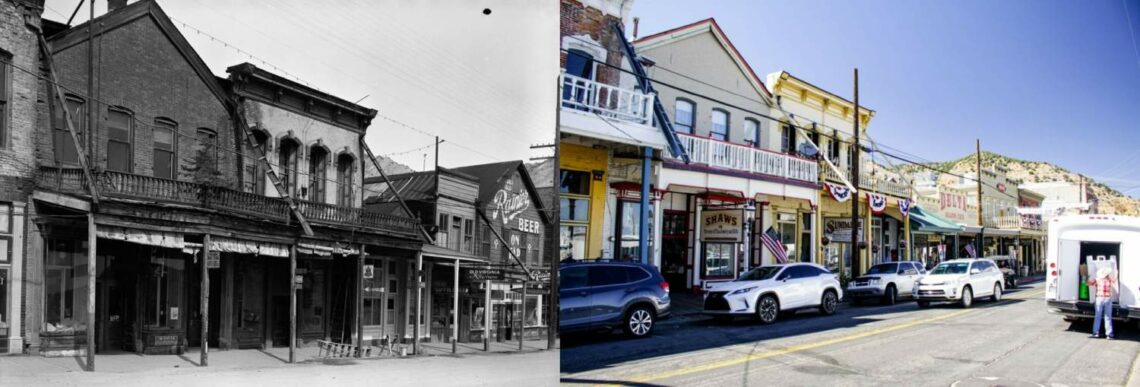
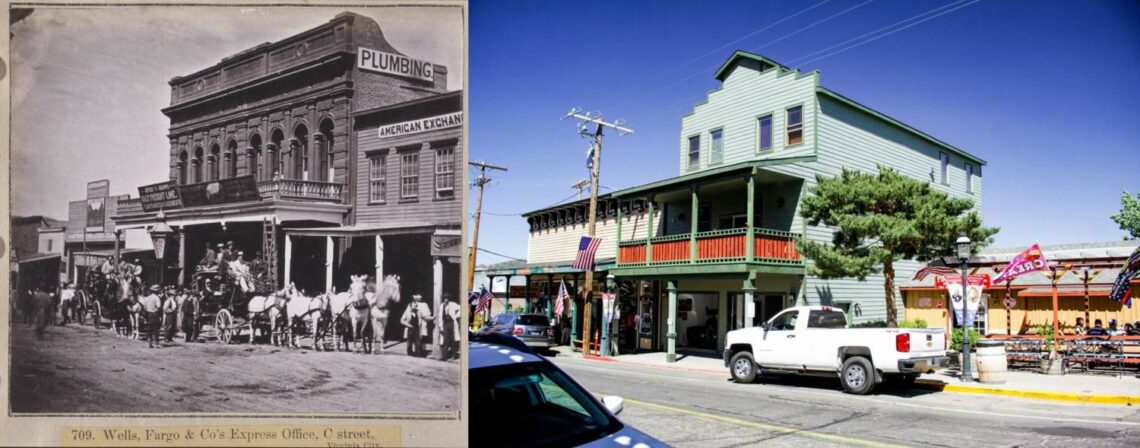

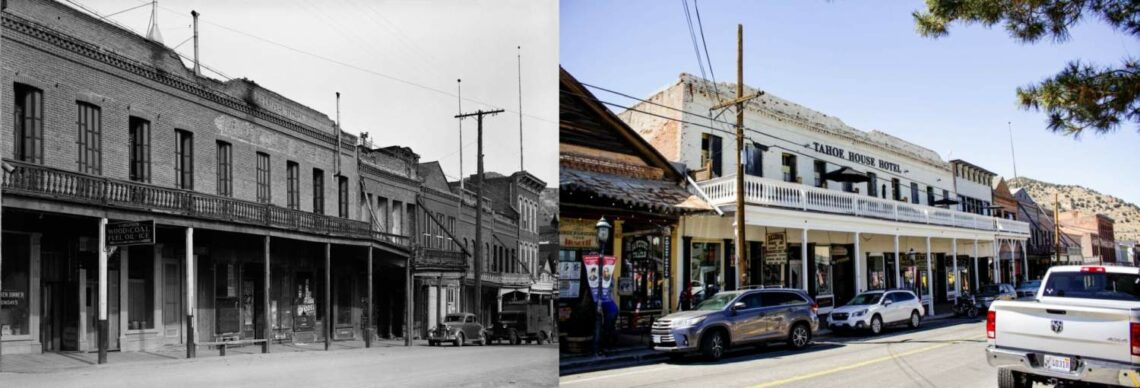
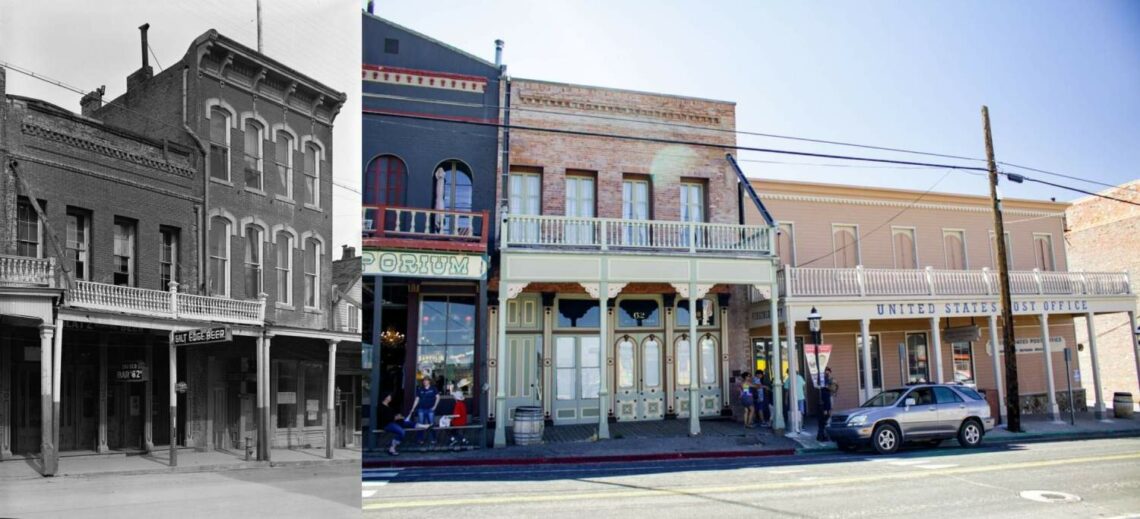

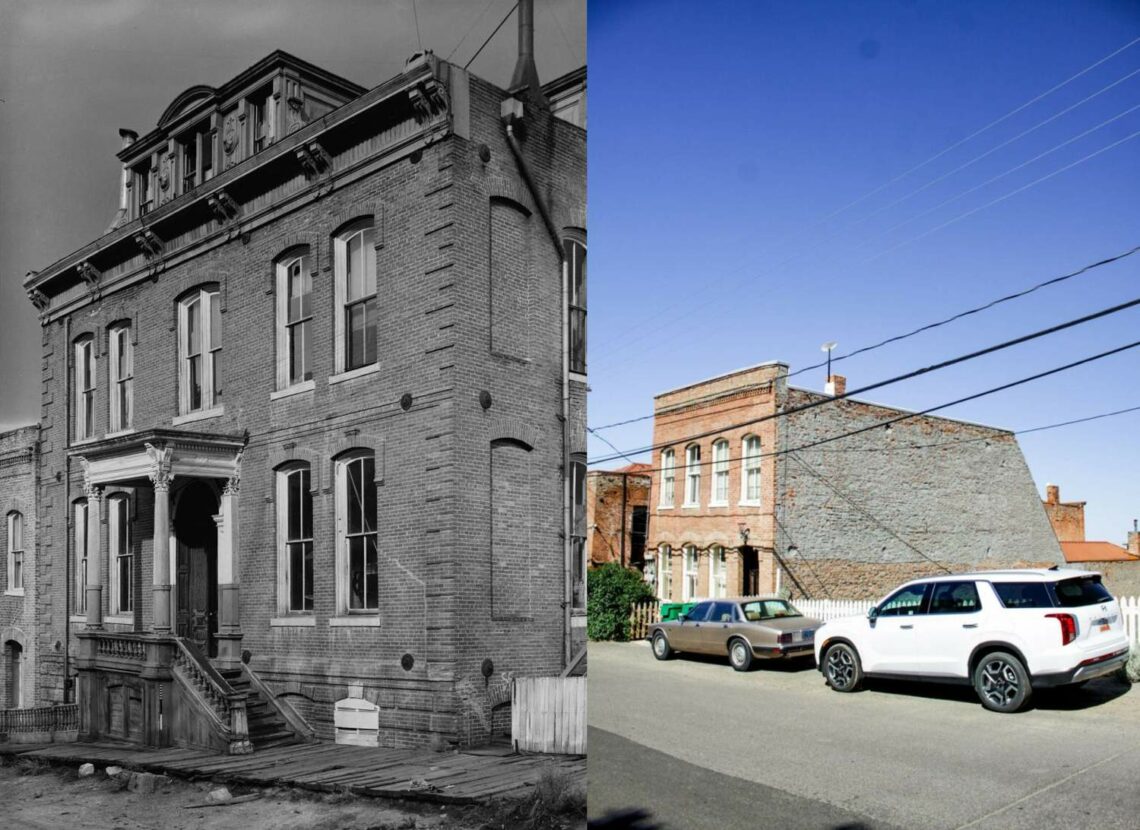

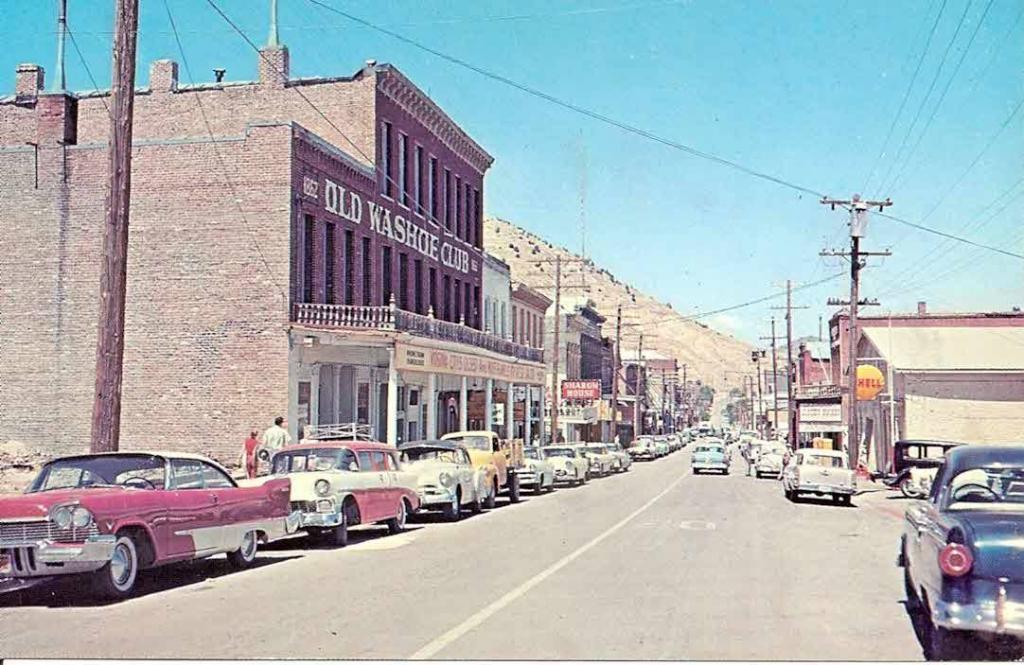
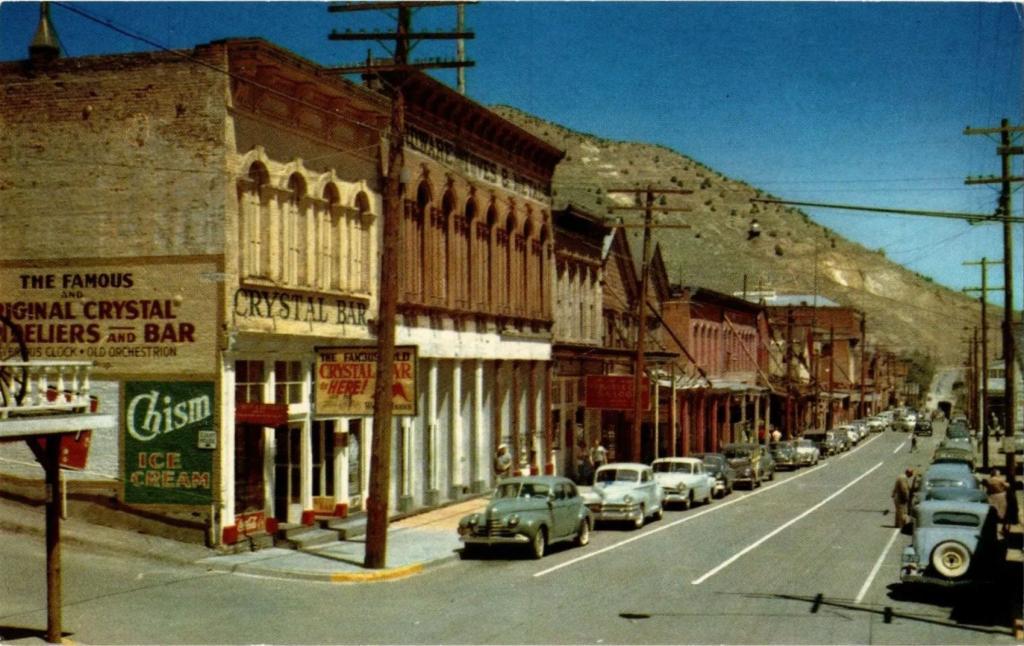
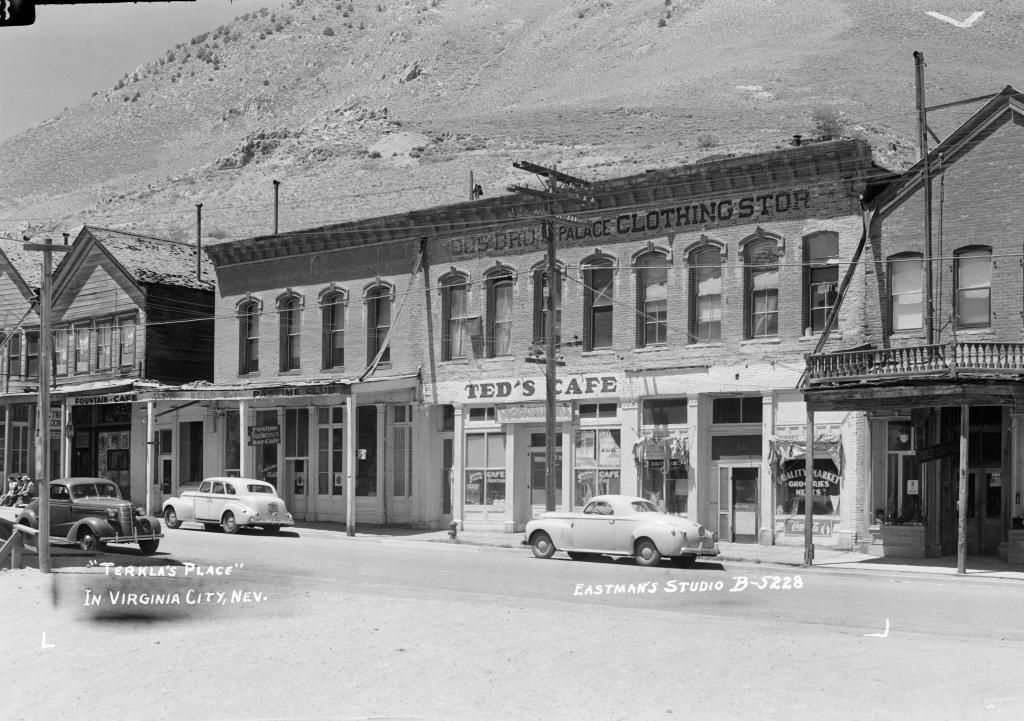
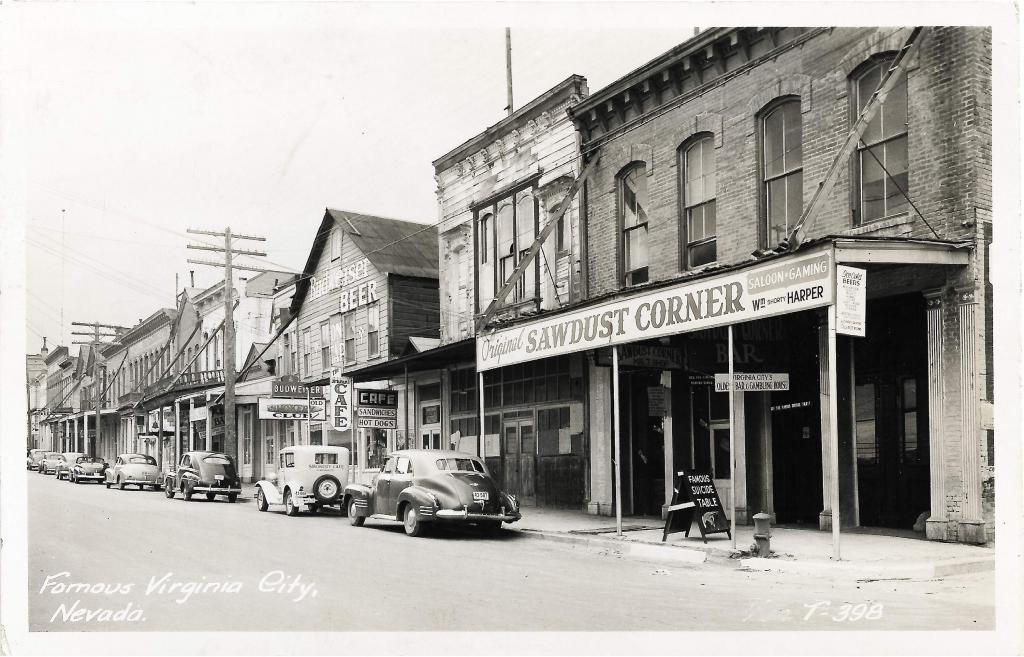
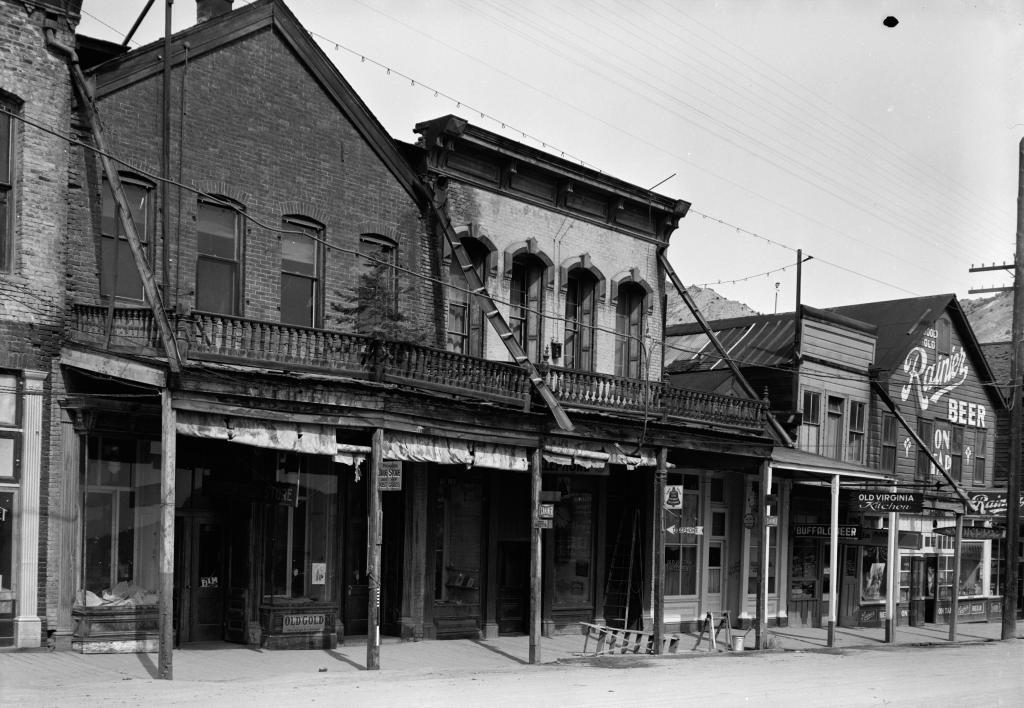
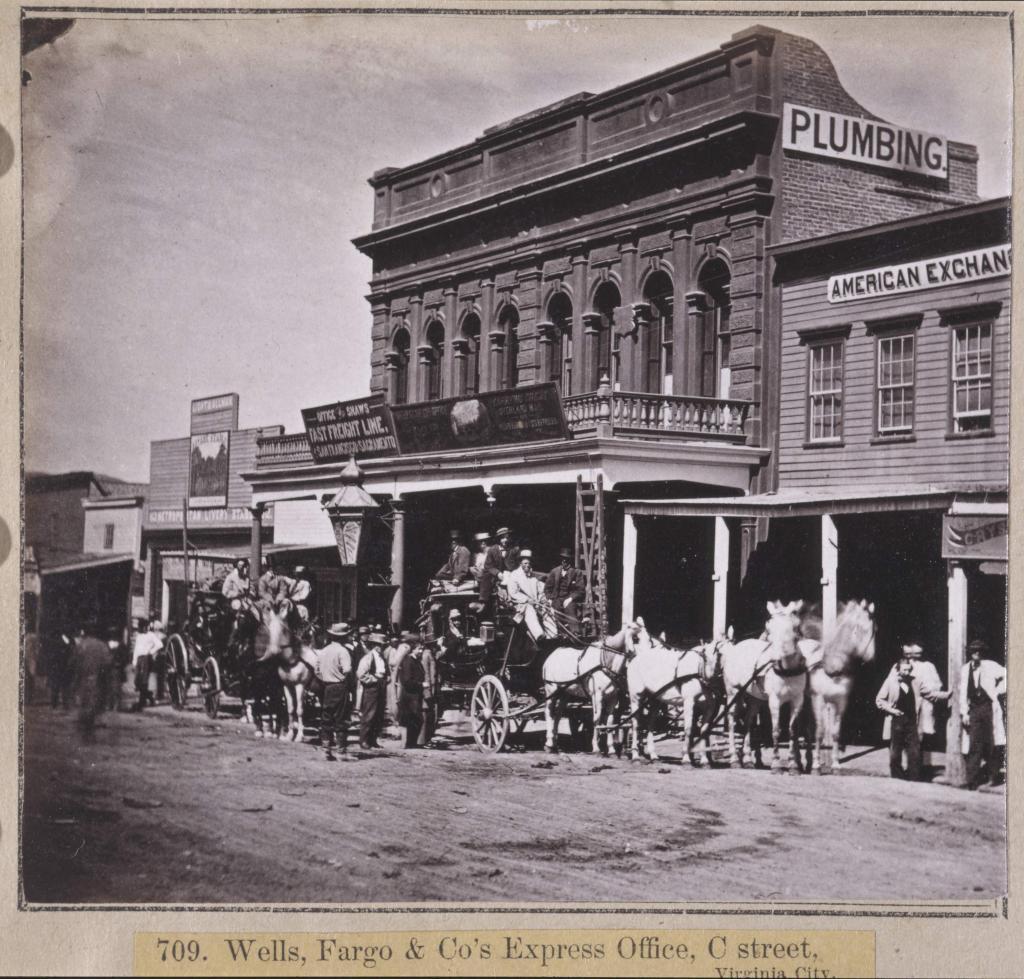

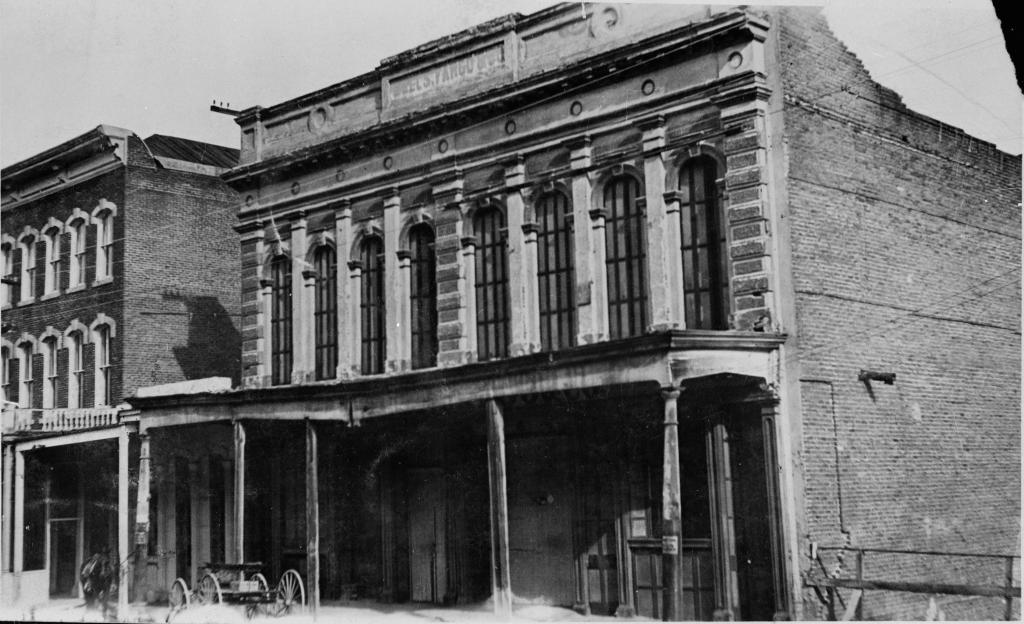
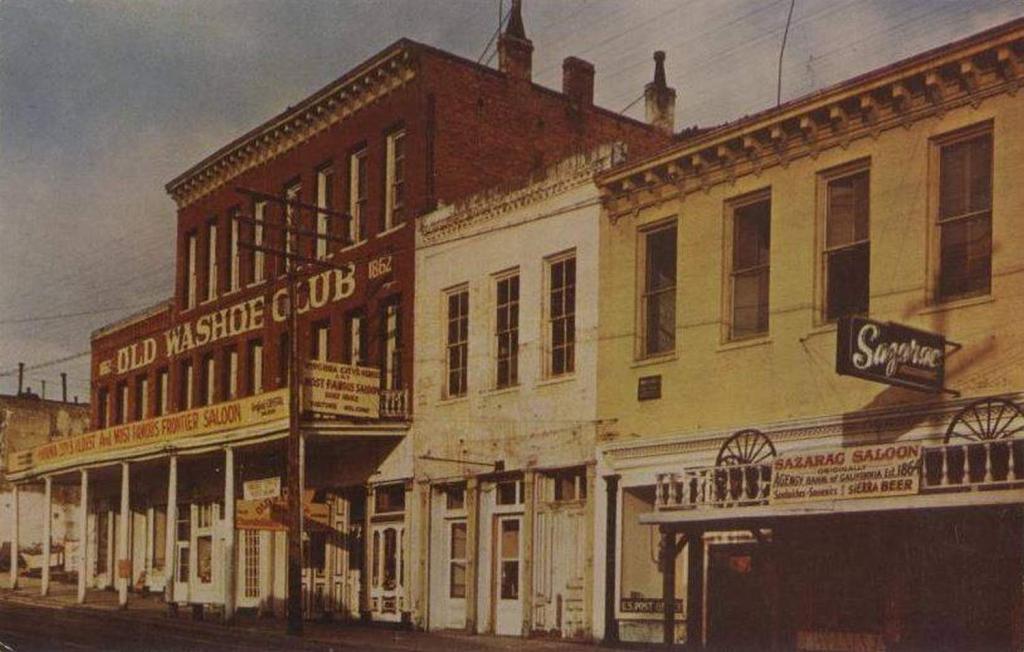
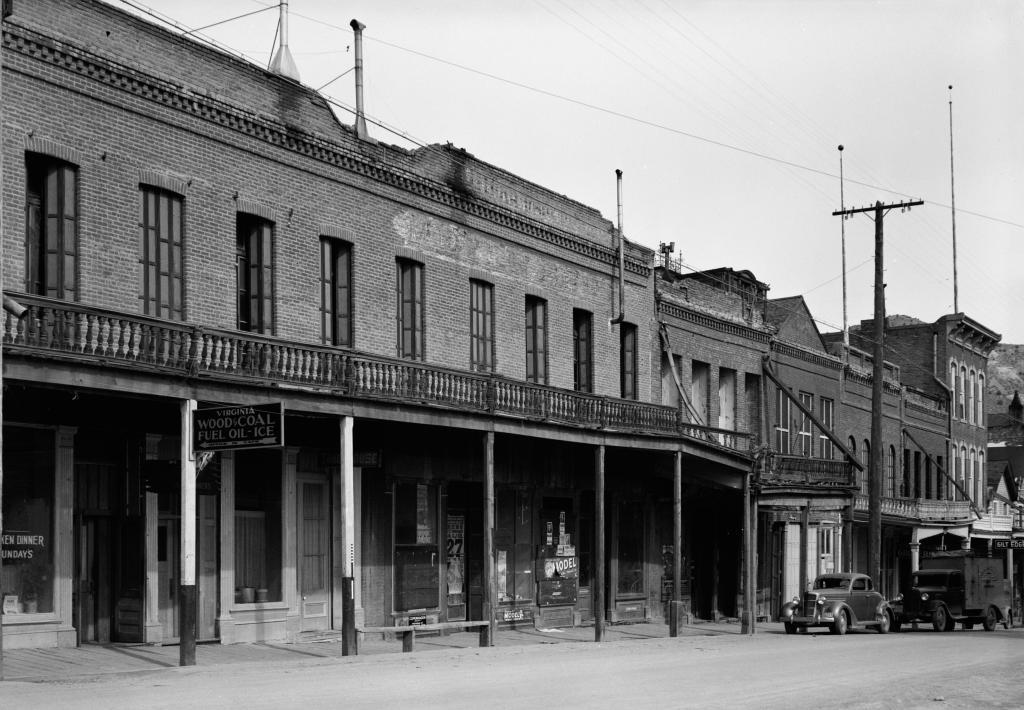
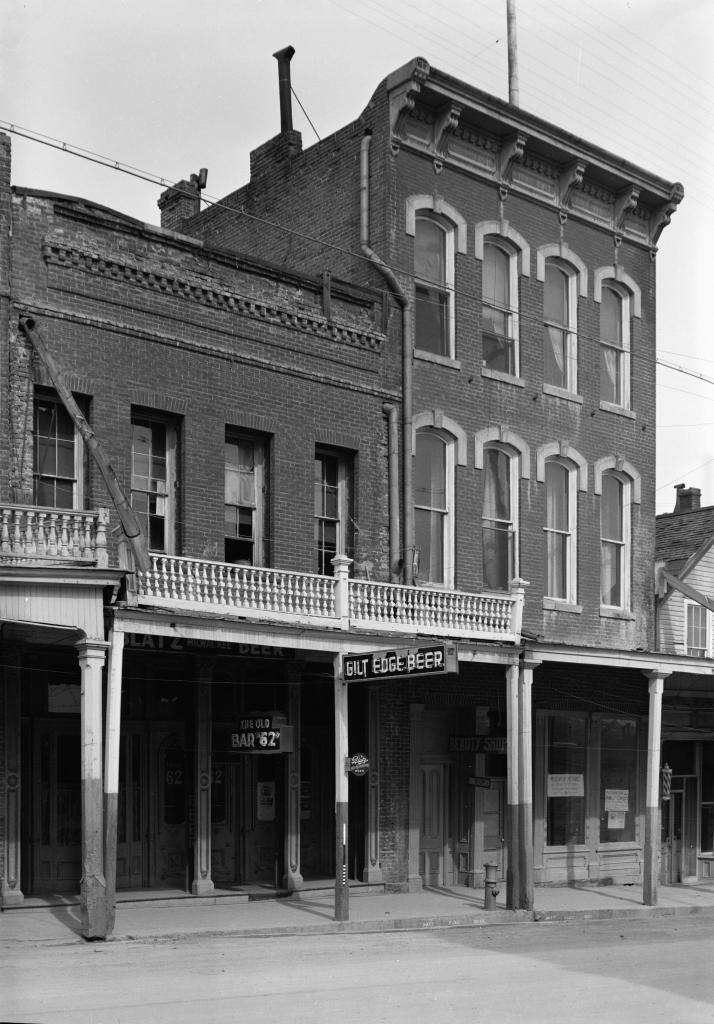
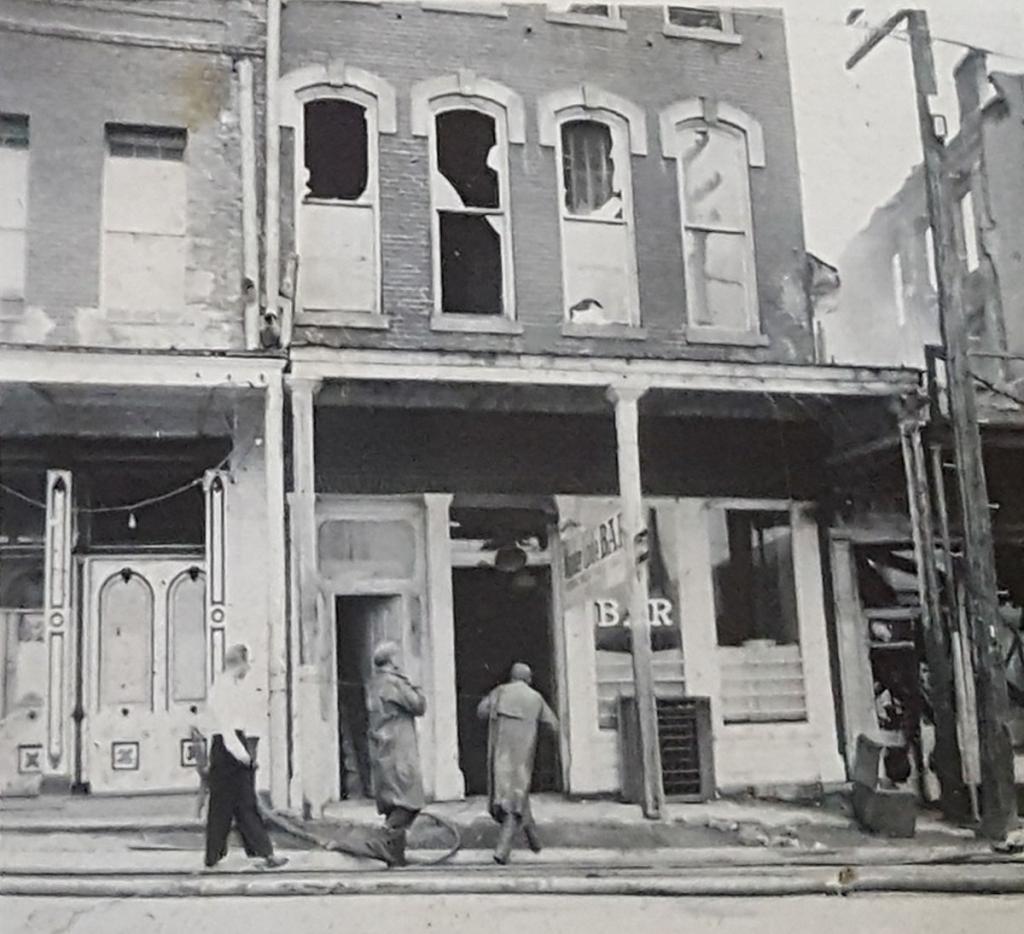
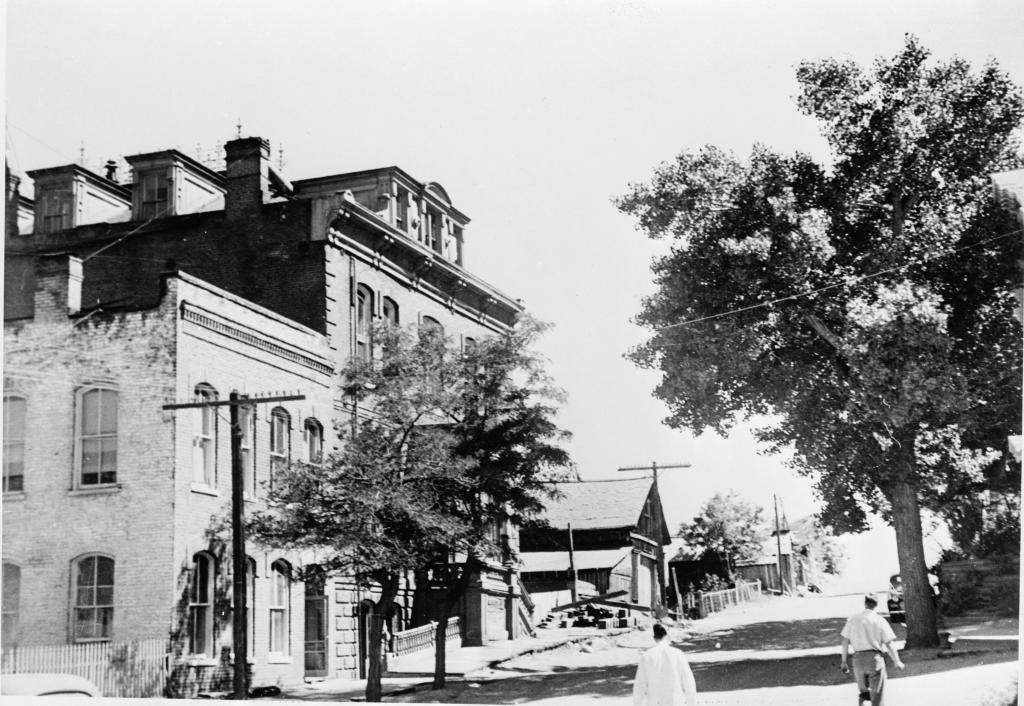
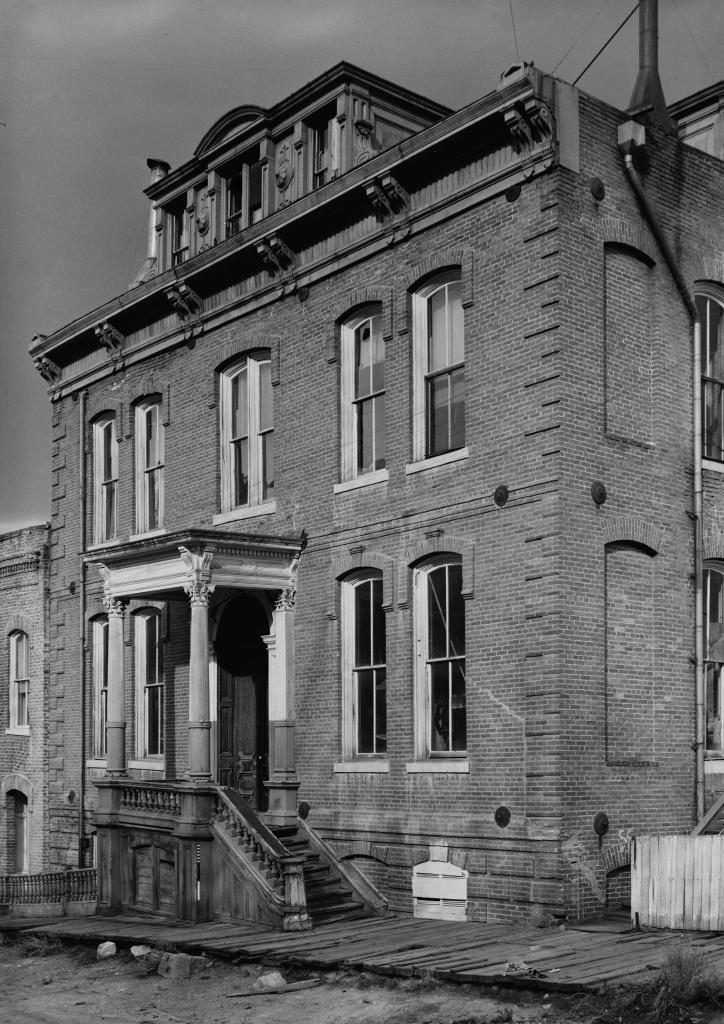
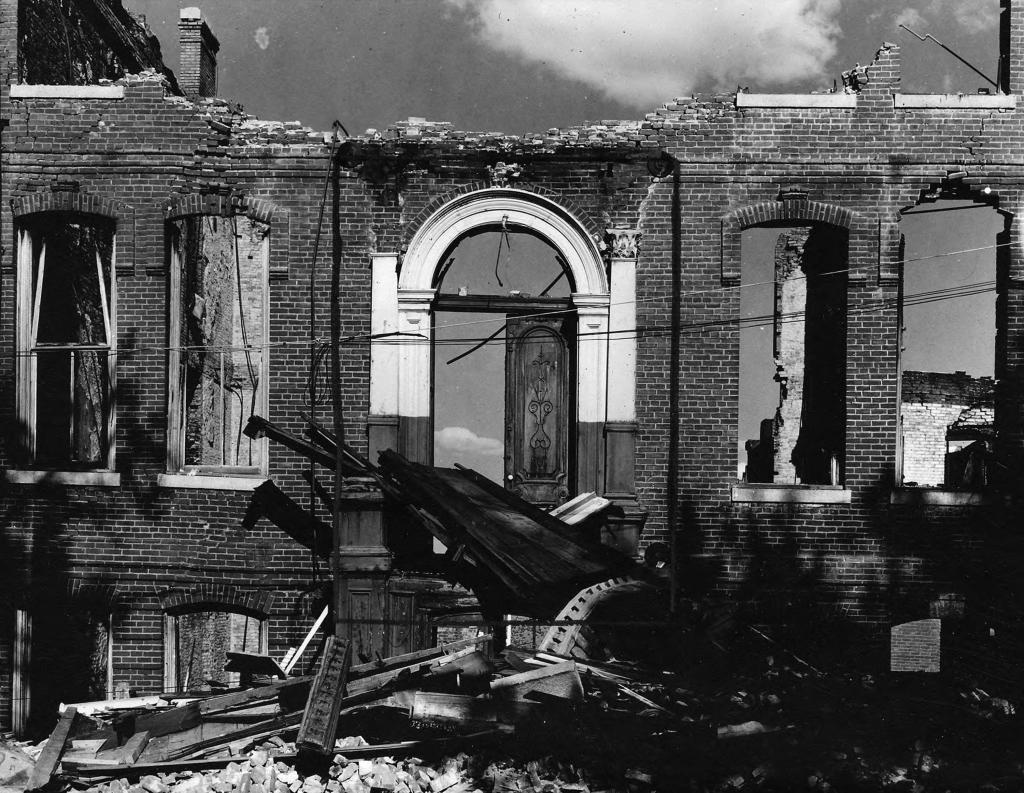


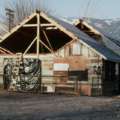
This is a fine set of photographs. Thanks for making them accessible!
Another great post. Thanks for the pictures and explanations. I miss Nevada!
If you like this article, you’ll love: The Carson City Historical Society invites you to a special presentation by local historian Jed Block, “Carson City: Then and Now,” on Sunday, April 27th, at the Brewery Arts Center Grand Ballroom. This engaging event offers a unique look at the city’s past and present while supporting an important cause. Tickets are available at BreweryArts.org.